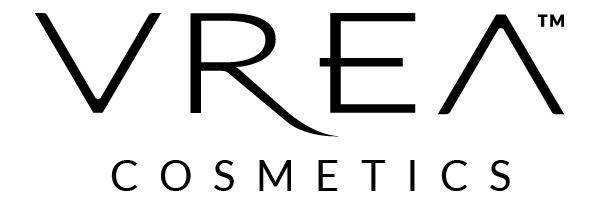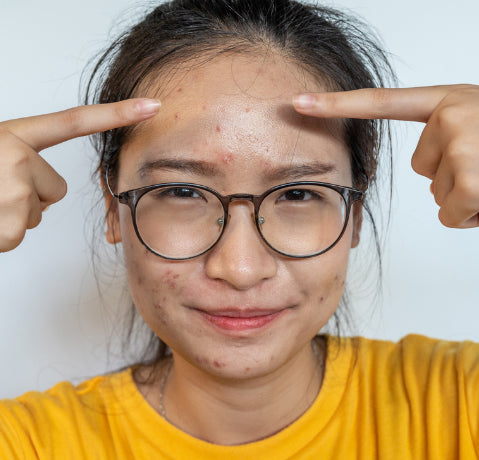Post-inflammatory hyperpigmentation (PIH) is a disorder that occurs when skin makes extra melanin after being irritated or injured. Melanin is a natural pigment that is responsible for the color in your hair, skin, and eyes.
PIH can affect the face and body (mostly the UV-exposed areas) and it ranges in color from pink to red, brown or black, depending on skin tone and depth of hypercoloration. It can affect either your epidermis (the top surface of the skin), or dermis (deep layer of the skin). As you can imagine, hyperpigmentation limited to the epidermis will have a higher likelihood of resolve than dermal hyperpigmentation.
PIH is chronic and more common and severe in darker-skinned people (Fitzpatrick skin types III–VI). The darker the skin color, the more intense and persistent PIH tends to be.
PIH doesn’t discriminate against gender or age. And while it can improve right away, the process can sometimes take months to years which is why combination therapy is generally most effective.
PIH often affects people with acne and this is how it works:
The blemish triggers melanocytes (the cells producing melanin) to overproduce melanosomes (pigment granules). The excessive pigment darkens and discolors the formerly injured area and once the initial blemish subsides, the spot of hypercoloration (post-acne mark) can remain.
NOTE:
Acne Scars vs. Post-Inflammatory Hyperpigmentation are not the same.
While some people refer to the post-acne marks (PIH) as scars, PIH is not true scarring. It leaves a mark on the skin, but it does not damage the follicle. Acne scars can be raised or pitted, while the marks created from PIH are flat on the skin.
What Causes Post-Inflammatory Hyperpigmentation?
The most common causes are acne and eczema, but any type of trauma or irritation to the skin has the potential to cause PIH. Other etiologies include:
• Impetigo
• Infections
• Allergic reactions
• Bug bite reactions
• Psoriasis
• Burns
• Razor bumps
• Rashes
In most cases, PIH resolve shortly after occurrence without any treatment, and using makeup to cover the marks can the helpful until recovery is complete.
Treatment of PIH typically includes multiple modalities in addition to daily protection against ultraviolet (UV) radiation.
Topical Therapy
Alpha Hydroxy Acids (AHAs).
AHAs (particularly glycolic acid) are a good starting point for treatment. Beta Hydroxy Acid (BHA) like salicylic acid is comparable plus it’s tremendously helpful in managing breakouts as well.
AHAs and BHA help speed up the skin's natural exfoliation process, improving the look of PIH. More potent AHA treatments are available with prescription.
Other OTC ingredients include Vitamins A (Retinol) and C, N-acetyl glucosamine, and Niacinamide.
Topical Retinoids (synthetic forms of Vitamin A).
Great not only for treating acne, but this rapid form of exfoliation can also help fade PIH faster.
When using Retinoids, look for excessive dryness, redness, and irritation, and use with caution and care, to avoid triggering more PIH. Highly recommend speaking with your dermatologist about this!
Topical lightening agent known as hydroquinone (or mequinol if looking for a less irritating agent).
A commonly used triple-threat combination includes combining hydroquinone with a topical retinoid with or without a topical steroid. I.e. hydroquinone 4%, tretinoin 0.05%, fluocinolone acetonide 0.01%.
In-Office Treatments include:
Chemical peels; they work by removing the epidermal cells containing excess melanin but should only be done by experienced clinicians as they can cause skin irritation and additional hyperpigmentation.
Lasers have a similar effect as the peels but tend to be more precise and the dermatologist has more control over the intensity of the treatment. Lasers generally ‘zap’ the affected areas with high-energy light. The milder treatments work on the skin’s surface layer (the epidermis), while more intense treatments can penetrate the deeper layers of the skin. Remember though that laser should only be done by expert clinicians as they can cause skin irritation and additional hyperpigmentation when done improperly.
Microneedling.
Microdermabrasion.
Good to know here:
One treatment is not enough to fade stubber hyperpigmentation. You'll likely need a series of treatments spaced two to four weeks apart. The licensed professional can determine which of these treatments (if any) would be most effective for you.
How to Get the Best Results:
Speed of recovery can be improved with strict sun protection, which includes daily application of a broad-spectrum SPF 30 sunscreen containing zinc and titanium dioxide, sun hats and UV-protective clothing.
The sun may darken PIH discolorations and make them fade more slowly. Additionally, many PIH treatments (and many acne treatments in general) can make your skin more sensitive to the sun.
Limit the time you spend in the sun and stay out of the sun during its most intense hours (10 AM – 4 PM).
Recovery rates vary from person to person and healing time depends on the difference in color between the natural skin tone and the darkened patches. The more significant the difference, the longer it will take to rebalance.
Living With Post-Inflammatory Hyperpigmentation
Living with PIH doesn’t cause any serious physical health problems, but (speaking from experience), it can affect mental health and self-confidence.
Covering the marks with makeup can help. Being proactive with treatment helps. Protecting from the sun daily (during all seasons) helps.
The VREA 4-In-1 Concealer SPF 30 not only helps cover the marks but it’s a great addition to your UV protection arsenal. And in addition to the broad-spectrum UV protection, the 4-In-1 concealer offers blue light and pollution protection as well.

